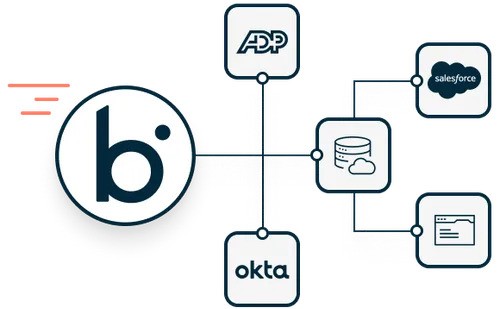How Enterprise Boomi Integration Services Facilitate Seamless Cloud Migration?
How Enterprise Boomi Integration Services Facilitate

Cloud migration is a critical step for businesses looking to enhance agility, scalability, and operational efficiency. As organizations increasingly shift their data, applications, and workloads to cloud environments, the need for a seamless transition becomes more evident. One of the most effective ways to ensure a smooth migration is through the use of Enterprise Boomi Integration Services. These services provide a unified platform that allows companies to integrate their existing systems with the cloud, streamlining the migration process and reducing potential downtime.
In this article, we’ll explore how Enterprise Boomi Integration Services play a crucial role in facilitating seamless cloud migration, from improving data connectivity to ensuring security and compliance.
1. The Importance of Cloud Migration
Cloud migration is the process of moving applications, data, and other business components from on-premise infrastructure to the cloud. For many enterprises, this transition is not just a technological upgrade but a strategic move that enables better scalability, faster time-to-market, and significant cost savings.
However, despite its advantages, cloud migration comes with several challenges. These include data security risks, the complexity of transferring data and applications, compatibility issues, and potential downtime during the migration process. That’s where Enterprise Boomi Integration Services come in. They address these challenges by providing a comprehensive integration platform that connects disparate systems and ensures a smooth transition to the cloud.
2. What Are Enterprise Boomi Integration Services?
Dell Boomi, or Boomi, is a leading integration platform as a service (iPaaS) that enables businesses to connect applications, data, and people. Enterprise Boomi Integration Services are designed to help organizations seamlessly integrate on-premise systems with cloud platforms and third-party applications.
These services offer a robust suite of tools that support real-time data synchronization, automated workflows, and API management. Additionally, Boomi’s cloud-native architecture allows it to easily scale as businesses grow, making it a suitable solution for enterprises of all sizes.
3. Key Benefits of Enterprise Boomi Integration Services in Cloud Migration
a) Seamless Data Connectivity
One of the primary challenges in cloud migration is ensuring seamless data connectivity between on-premise systems and the cloud. Enterprise Boomi Integration Services facilitate this by providing a unified platform for integrating various applications, whether they are on-premise, in the cloud, or hybrid environments.
The platform supports a wide range of connectors and protocols, allowing enterprises to easily link legacy systems with modern cloud solutions. This level of integration helps ensure that data is accessible and synchronized in real-time, minimizing disruptions during the migration process.
b) Automation of Complex Processes
Migrating to the cloud often involves the movement of large volumes of data and complex business processes. Manually handling these tasks can be error-prone, time-consuming, and costly. Boomi Integration Services offer extensive automation capabilities, allowing enterprises to automate data flows, monitor processes, and set up workflows that facilitate faster cloud migration.
Automation ensures that routine tasks such as data mapping, validation, and transformation are done consistently and efficiently, freeing up IT teams to focus on more strategic initiatives.
c) Reduced Downtime and Disruptions
One of the biggest concerns for businesses undergoing cloud migration is the potential for downtime, which can disrupt operations and lead to revenue losses. Enterprise Boomi Integration Services mitigate this risk by offering a real-time data synchronization feature that ensures data is always up-to-date across both on-premise and cloud systems.
Moreover, Boomi’s platform allows for phased migration strategies, where specific parts of the infrastructure can be moved to the cloud while keeping others operational. This reduces the likelihood of widespread disruption, allowing businesses to continue operating with minimal downtime.
d) Enhanced Data Security and Compliance
Data security is a top priority for any organization migrating to the cloud. The Boomi platform comes equipped with robust security features that protect sensitive data throughout the migration process. Enterprise Boomi Integration Services enable end-to-end encryption, role-based access controls, and compliance with key industry standards such as GDPR, HIPAA, and SOC 2.
By ensuring that data is secure both in transit and at rest, Boomi helps enterprises minimize the risk of breaches and non-compliance, two factors that can derail a cloud migration project.
e) Scalability and Flexibility
As businesses evolve, their integration needs can change rapidly. Enterprise Boomi Integration Services offer unparalleled flexibility, allowing enterprises to scale their integration processes as they grow. This adaptability is especially beneficial in cloud migrations, where businesses might need to migrate a few applications first, followed by more complex systems later.
Boomi’s cloud-native architecture ensures that integration solutions can be quickly scaled to meet increased demand or accommodate new technologies as they emerge.
4. How Enterprise Boomi Integration Services Simplify Cloud Migration Steps
a) Assessment and Planning
Before cloud migration begins, enterprises need to assess their existing IT infrastructure to identify potential challenges and create a migration strategy. Enterprise Boomi Integration Services provide advanced analytics and reporting tools that help organizations assess the compatibility of their systems with the cloud environment.
b) Data and Application Migration
Boomi’s platform enables seamless migration of both structured and unstructured data, ensuring that all business-critical information is transferred accurately. The platform’s drag-and-drop functionality simplifies the migration process, allowing even non-technical users to map data and configure workflows easily.
c) Post-Migration Optimization
After migration, enterprises need to ensure that their systems are optimized for performance. Enterprise Boomi Integration Services provide monitoring and analytics tools that help businesses track data flows, identify bottlenecks, and optimize workflows for better performance.
5. Overcoming Cloud Migration Challenges with Enterprise Boomi Integration Services
Although cloud migration offers numerous benefits, it is not without its challenges. From data compatibility issues to the risk of downtime, organizations need a reliable integration platform to navigate these hurdles effectively. Enterprise Boomi Integration Services offer a solution to many of these challenges by providing real-time synchronization, automation, and robust security features.
Addressing Compatibility Issues
One of the primary concerns during cloud migration is ensuring that on-premise systems are compatible with cloud environments. Boomi’s extensive library of connectors and pre-built integrations allows enterprises to easily bridge this gap, ensuring compatibility between legacy systems and modern cloud platforms.
Conclusion
In today’s fast-paced digital landscape, businesses must continually evolve to remain competitive. Cloud migration is an essential part of that evolution, offering benefits such as increased scalability, flexibility, and cost-efficiency. However, ensuring a seamless migration process is critical to realizing these benefits. Enterprise Boomi Integration Services provide businesses with the tools and capabilities needed to facilitate smooth cloud migrations by improving data connectivity, automating complex processes, minimizing downtime, and ensuring robust security.
By leveraging these services, enterprises can not only accelerate their migration journey but also ensure that their cloud infrastructure is optimized for future growth.





